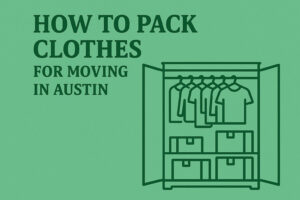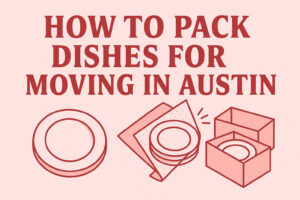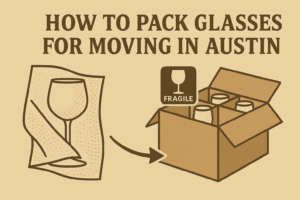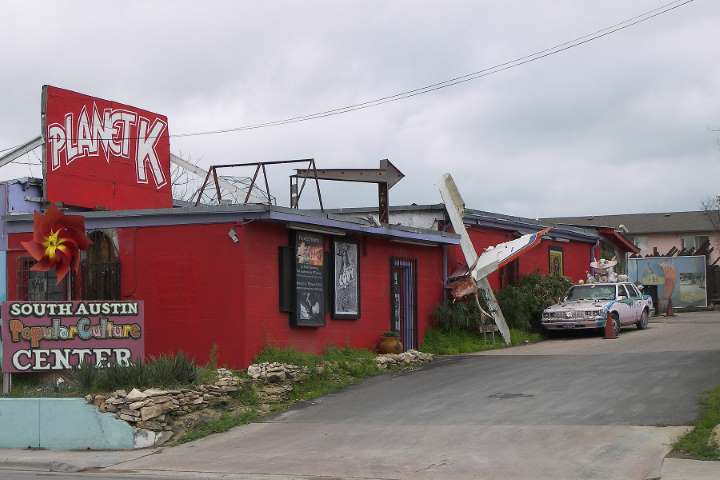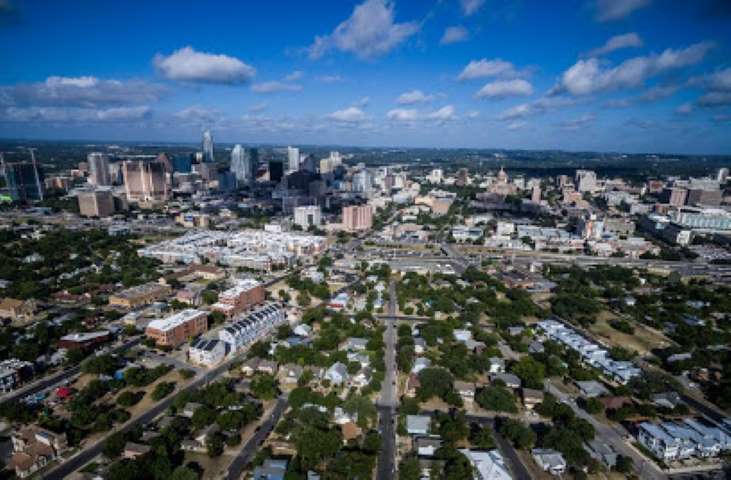
One of the worst parts of packing for a big move is figuring out where to start. The sheer number of things in your home that you need to box up can sometimes be overwhelming. That’s why we offer residential move in Austin, Texas.
We at Not A Hobby Moving made this list of what you should pack first when moving to a new house, which will hopefully help get you on the right track.
What To Look First When Moving?
Items From Storage
No matter what you have in your home, the best place to start is your storage closet. There’s a good chance you haven’t used anything in there for the last year, so the chances of you needing any of it before the move are pretty slim.
The best part is that a bunch of these items are probably already packed into boxes and ready to go. However, you’ll still want to look through everything in order to take an inventory and make sure none of it will be vital to your daily life before packing it away. We also offer packing and unpacking services for you to save time and hassle.
Clothes You Aren’t Using
Whether you have a ton of clothes or hardly any, there will be some seasonal items that you aren’t going to wear again until well after the move. You might as well get them out of the way right now. If you find any other clothes that you don’t think you wear before moving out, you should put them into boxes as well. This will save you move time down the line.
Anything That’s Fragile
In the final days before the moving date, you are going to be throwing everything you own into whatever box it’ll fit in. Obviously, you won’t want to do that with anything fragile, so it’ll be best to get those out of the way before things get stressful. This extra time will also help you pack these items more carefully and in a way that won’t break them the second the box gets set in the moving truck.
— Not A Hobby Moving (@NotAHobbyMoving) October 18, 2022
Speaking of which, if you’re in need of packing services in the Austin, Texas area, be sure to look into our services. We handle our customers’ goods with the utmost care, so you shouldn’t have to worry about anything breaking while using our services.
Excess Objects Around the House
In this list of what you should pack first when moving to a new house, we recommend packing up all the extra things you have lying around. This could include books, movies, board games, or any other pieces of entertainment that you won’t have the time to use before moving.
This can also include decorative items and other knick-knacks that you have on display. Since you’re getting ready to leave, you don’t need your house to look nice anymore. Anyone who comes over will be well-aware that your place is going to be a disaster, so just embrace it and pack away the things that keep it looking nice.
How Long Before I Move Should I Start Packing?
Once you make a firm decision to move, you can decide what to pack first. Start preparing by getting packing supplies. Take an inventory of each room and note items you want to sell or donate. It’s wise to do some decluttering and sorting of any possessions you may no longer want. Now is the time to go through all your stuff, decide what to keep and what to get rid of.
It doesn’t hurt to begin early. If you have a whole house to pack, you may want to begin six weeks before the move but it depends on how much you have to pack. When you are packing for a move, pack room by room, beginning with non-essential items. Label boxes carefully by room. This allows the movers to place the box in the proper room at your new place. If you are moving in a hurry, pack strategically and enlist the help of friends. Extra help can speed up the moving process.
Pack Up The Guest Bedroom
You can pack the guest bedroom as long as you won’t be having guests before you move. Disassemble furniture when possible so it is easier to move. Keep screws and small assembly parts together in a labeled bag. It can be helpful to tape the bag to the underside of the furniture, as long as it won’t scratch it, so when it’s time for reassembly, you know right where the hardware is located.
Pack Books, Artwork and Decor
Place heavier books at the bottom of each box to provide a stable base. Lay them flat to avoid damage to the spines. Fill empty spaces with packing paper to prevent shifting during transit. Avoid overpacking the box so it doesn’t become too heavy.
When packing framed artwork, place corner protectors around each corner. Wrap each piece individually in bubble wrap and secure it with packing tape. Place vertically in the box, never flat or on top of each other to prevent damage from occurring. Fill any gaps with packing paper. Write arrows on the box to indicate the upright position. Seal boxes securely.
Wrap fragile decor items with bubble wrap. Use packing paper around them to cushion them. Fragile decor items should be packed separately to avoid damage.
Box Up Extra Linens
Before packing your linens, sort and discard old or damaged items or any you don’t use. Use appropriate packing materials. Vacuum-sealed bags work well for linens because they save space, but you can also use sturdy boxes or plastic tubs. To keep your boxes organized, separate by categories and label boxes. To protect your delicate linens, wrap them in tissue paper. You may want to save some blankets, towels or linens out to pack around your fragile items because they provide padding for breakable items.
Pack Up Any Extra Toys
Toys can be challenging to pack because some have many parts and pieces. Have your child help sort and decide which to keep, donate or discard. Group similar toys together like board games, building blocks, stuffed animals or action figures. This will make it easier when you unpack and organize your toys at your new home. If there are large toys, disassemble them. Keep screws, small parts and batteries in labeled plastic bags and tape securely to the toy they belong to so they don’t get lost. Some toys might require battery removal or specific temperature conditions so be sure to examine them and pack them carefully, following individual instructions of each toy. Put just a few special smaller toys into a travel backpack for your child to play with on the way to your new home or for them to enjoy when they arrive in their new space.
Pack Shoes and Jewelry
Make sure your shoes and jewelry are clean and organized to protect them during your move. Wrap each pair of shoes in bubble wrap or tissue paper to prevent scuffs. Put shoes in shoe boxes or plastic bins to keep them organized. Place in labeled boxes and cushion with paper or bubble wrap to prevent movement.
When packing jewelry, use small boxes or plastic bags to organize, separate and to prevent tangling. Wrap fragile pieces in tissue paper to avoid damage. A jewelry roll is the perfect protector for many jewelry pieces. You will want to keep your valuable and sentimental pieces safe with you instead of in a moving truck. Consider photographing them in advance to keep an inventory for you and for insurance purposes.
Leave The Kitchen for Last
Careful planning and organization when packing your kitchen can relieve a lot of stress when you move into your new home. Some kitchen items may be used up until moving day so may want to leave them unpacked until the day before.
Take this opportunity to sort through your kitchen appliances, cookware, utensils and dishes for items that are broken or you no longer want and donate, sell or trash. Make sure you have the proper packing supplies for packing your kitchen because kitchen items have many shapes and sizes. Group similar items together.
Pack all glassware together and consider using special packing boxes for glassware that have extra padding for each individual glass. Pack pots and pans together. Wrap fragile dishware in bubble wrap or packing paper and stand vertically in boxes to minimize the risk of breakage. When packing kitchen appliances, try to use the original box and remove detachable parts.
Keep a detailed list of what you’re packing and label each box.
To ensure you have few or no perishable items to move, plan your cooking and grocering shopping wisely in advance. Donate or share leftover perishable foods so you don’t have to move them.
Work With Reliable Movers
For your peace of mind, choose a reliable mover so you can have a stress-free moving day and a smooth transition to your new home. A reliable mover will take precautions to protect your belongings during the moving process. Professional movers are experienced in handling all aspects of residential moves, including packing, loading and unloading, transporting, and unpacking. They have a systematic approach to moving and will ensure the safety of your possessions. If they are reliable, they will provide you with a transparent, detailed breakdown of your moving costs and won’t surprise you with hidden fees.
Not A Hobby Moving is your trustworthy moving partner. We want to make your residential move as easy, affordable and as stress-free as possible. We proudly serve our Austin community and the surrounding areas in Texas with excellent customer service. Our expert moving team can safely and efficiently handle your move, no matter the scale or complexity. Our full service moves include premium packing and unpacking services. We are a locally-owned Austin business with a solid history of moving experience you can trust.

